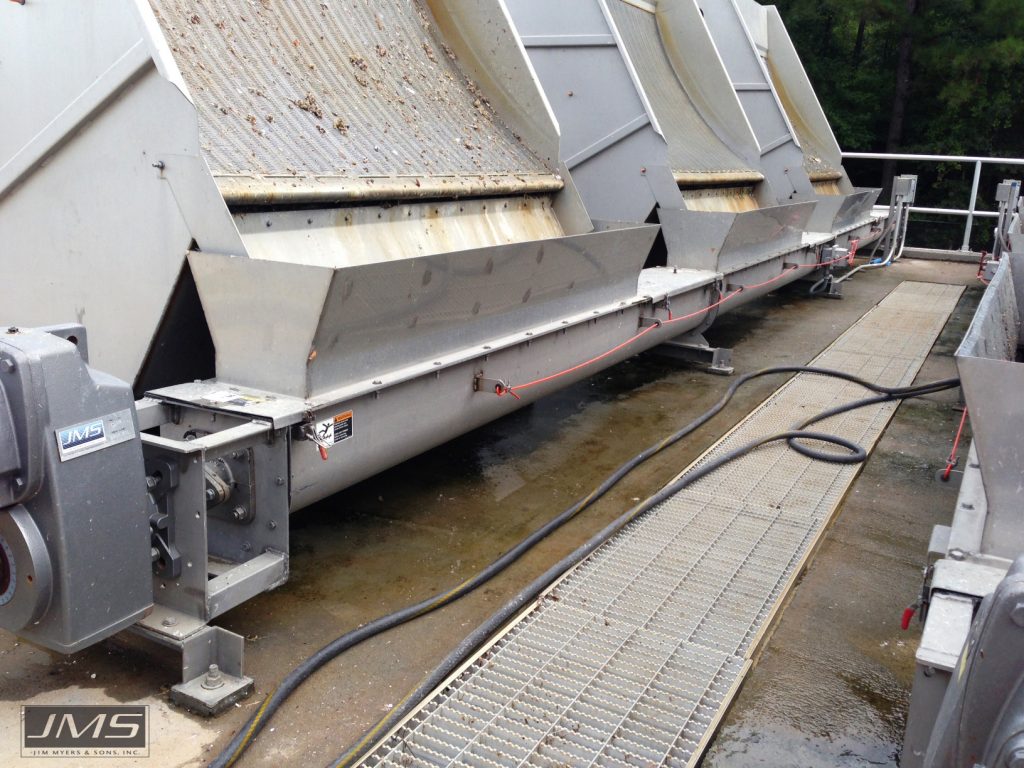As a Product Manager at JMS, one of my jobs is to work with Owners and Engineers on a day to day basis answering their questions. I recently had a conversation with an Engineer regarding recommendations for conveyance of compacted screenings from one unit to two adjacent dumpsters. This is a common application; however, some pertinent questions came up from both sides. Learn more about Screw Conveyors for Raw Screenings with this article.
My first question was to define the amount of raw screenings that we are talking about transporting. It is important to know the maximum amount of solids in volumetric flow (ft3/hr.) that will be transported per unit of time and whether this is batch or continuous flow. The layout of the area is important as well so distances and lift can be accounted for in the design and Hp.
We normally oversize screenings conveyors to allow for large objects to pass, especially if the plant has a CSO, to handle peak event discharge from the screens, and to handle large plugs from compactors. The screw needs to be as large as the potential plug from the compactor. Belt conveyors are a good choice for handling large objects often associated with a CSO during storm events. A belt conveyor downside, however, is that ragging may occur on the wiper and plows requiring extra housekeeping. The decision to pursue the design of a screw conveyor in this app was based on the ragging issue.

Several questions were returned from the engineer. Some of these may be questions may be of interest to other Engineers as they are working through the system design process. For simplicity, I will run through the list of questions and answers as they came up:
Screw Conveyors for Raw Screenings Q & A
Q: Is there a shafted screw option rather than shaftless?
A: Yes, the shafted screw is available as well, however the screenings tend to rag on the shaft of a shafted conveyor, so a pushing shaftless is preferred. The non-drive end of a shaftless is free and not connected, so screenings are discharged without impediment.
Learn more about shafted vs shaftless screw conveyors with this JMS Learning Center article.
Q: What is the maintenance involved with a shaftless conveyor?
A: There is a liner that will need to be replaced. The timing on this depends on how much grit is present in the screenings, the diameter, speed and run time. At a minimum I have seen 25,000 hours liner life in a high grit app, the average is approximately 50,000 hours.
Learn more about typical screw conveyor wear parts with this JMS Learning Center article.
Q: Does the screw need to be removed from the top to access the liner?
A: No, it only needs to be lifted one inch off of the liner to take the liner out in four-foot sections. The liner is rotated over the top of the spiral and lifted out through an open top cover. A spiral is very flexible so it can be lifted in just the 4’ area.
Q: Does the shaft/screw need greasing/maintenance often?
A: Some of the maintenance items are the same for the shafted and shaftless screw conveyor, others will differ.
Shaftless Screw Conveyor Maintenance tips:
Establish routine periodic inspections of the entire conveyor to insure continuous maximum operating performance.
Weekly:
- Ensure all trough covers, guards and drive guards are installed whenever conveyors are operating.
- Check drive for unusual noises or vibrations.
- Check screw conveyor for any unusual noises or vibrations.
- Check for good transfer of material, material spills at inlets and outlet.
- Check for reducer oil leaks.
- Check shaft seals for product leakage, adjust or grease as required.
Quarterly:
- Open covers and inspect trough liner for wear.
- Inspect screw flights for wear and wear pattern.
- Emergency stop switch, trip to test, reset.
- Check speed switch controller lights for active function.
Reducer oil:
- Initial oil change for drive at 500 hours. Drain and refill oil in gear reducer. Regular oil changes every 10,000 hours or 2 years whichever comes first.
Shafted Screw Conveyor Maintenance tips:
Weekly:
- Ensure all trough covers, guards and drive guards are installed whenever conveyors are operating.
- Check drive for unusual noises or vibrations.
- Check screw conveyor for any unusual noises or vibrations.
- Check for good transfer of material, material spills at inlets and outlet.
- Check for reducer oil leaks.
- Check shaft seals for product leakage, adjust or grease as required.
- Manually grease or check lubricant in cups for: hanger bearings.
Quarterly:
- Check shaft and bolts couplings for tightness
- Check for elongation of cross holes in screw or drive shaft.
- Inspect trough & screw flights for wear and wear pattern.
- Inspect hanger bearings for wear and shaft looseness.
- Manually grease or check lubricant in cups for: hanger bearings, tail bearings, & drive bearings.
- Emergency stop switch, trip to test, reset.
- Check controller lights for active function.
Reducer oil:
- Initial oil change for drive at 500 hours. Drain and refill oil in gear reducer. Regular oil changes every 10,000 hours or 2 years whichever comes first.
Q: Other than power, what other services need to be provided?
A: An emergency stop switch and loss of speed switch is standard. Optional services are: flush water connections for cleaning the conveyor, limit switches for pressure relief coves, actuators for slide gates (electric or pneumatic).
Q: What is the approximate budget for a 9” shaftless conveyor?
A: Typically, this will run something like $1,500 per foot, not including controls. This can also be dependent upon support systems and other variables (e.g. slide gates, material thickness and grade stainless, drive size, chutes, etc.).
Q: What is the maximum angle from horizontal the screw conveyor can be placed?
A: We like to stay at 25 degrees or lower with a full pitch screw. Steeper than that we will have to look at a reduced pitch screw and that will impact diameter and speed.
So, this is a summary of a recent exchange. I hope this will help answer some of the questions you might have regarding screw conveyors for screenings.
Greg Hyde joined the JMS Sales and Marketing Team as Product Manager | Material Handling. Greg has over 30 years of experience in material handling systems, having held high level engineering, sales and business management positions with large full line conveyor manufacturers. He is responsible for overall support and growth of the JMS Bio-HANDLING product line. Outside of work, Greg is a founding member of the “Jammin’ 4 Water” (Water Charities Fundraising Inc.). In regards to his position, Greg says, “ JMS has a rich history in design, quality and material handling. I’m excited to be part of this great team and look forward to guiding the Bio-HANDLING product family for long-term growth.”

